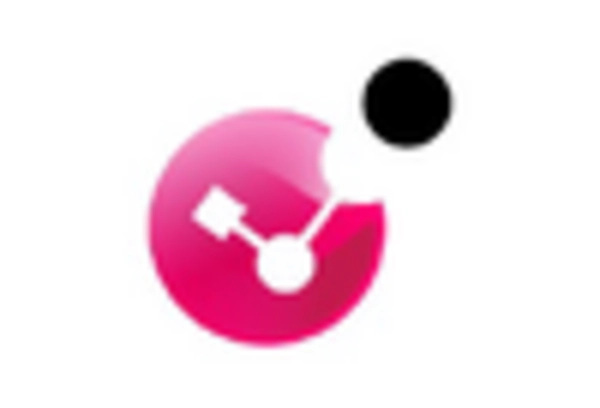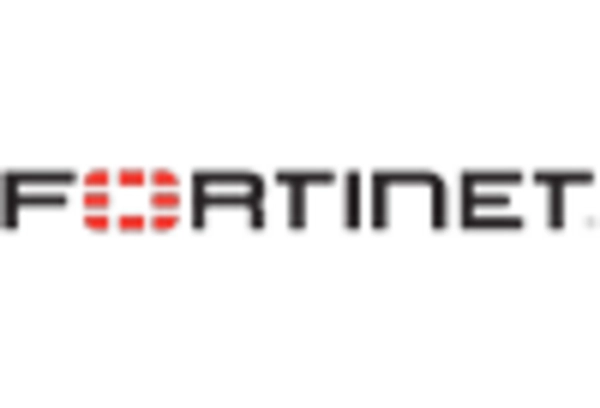The software defined-security market is currently characterized by a dynamic competitive landscape, driven by rapid technological advancements and an increasing demand for integrated security solutions. Key players such as Palo Alto Networks (US), Cisco Systems (US), and Fortinet (US) are at the forefront, each adopting distinct strategies to enhance their market positioning. Palo Alto Networks (US) emphasizes innovation through continuous product development, focusing on AI-driven security solutions that adapt to evolving threats. Cisco Systems (US) leverages its extensive networking expertise to integrate security into its broader IT infrastructure offerings, while Fortinet (US) aims to provide comprehensive security solutions that combine performance with cost-effectiveness, appealing to a diverse customer base. Collectively, these strategies contribute to a competitive environment that is increasingly focused on technological integration and customer-centric solutions.
In terms of business tactics, companies are increasingly localizing their operations to better serve regional markets, optimizing supply chains to enhance efficiency and responsiveness. The market structure appears moderately fragmented, with several key players holding substantial market shares, yet numerous smaller firms also contributing to innovation and competition. This fragmentation allows for a variety of solutions, catering to different customer needs and preferences, while the influence of major players helps to set industry standards and drive technological advancements.
In October 2025, Palo Alto Networks (US) announced a strategic partnership with a leading cloud service provider to enhance its security offerings in cloud environments. This collaboration is likely to bolster Palo Alto's position in the rapidly growing cloud security segment, enabling it to provide more robust solutions that address the unique challenges of cloud-based infrastructures. Such partnerships are indicative of a broader trend where companies seek to integrate their security solutions with cloud services, reflecting the increasing importance of cloud security in the overall market.
In September 2025, Cisco Systems (US) launched a new suite of security products designed specifically for small and medium-sized enterprises (SMEs). This move appears to be a strategic effort to capture a larger share of the SME market, which has been historically underserved in terms of advanced security solutions. By tailoring its offerings to meet the specific needs of SMEs, Cisco may enhance its competitive edge and drive growth in this segment, which is becoming increasingly aware of cybersecurity threats.
In August 2025, Fortinet (US) expanded its global reach by acquiring a regional cybersecurity firm in Europe. This acquisition seems to align with Fortinet's strategy to enhance its service capabilities and market presence in key international markets. By integrating local expertise and resources, Fortinet is likely to strengthen its competitive position and offer more localized solutions, which could resonate well with customers seeking tailored security services.
As of November 2025, the competitive trends in the software defined-security market are increasingly shaped by digitalization, sustainability, and the integration of AI technologies. Strategic alliances are becoming more prevalent, as companies recognize the need to collaborate to address complex security challenges. The shift from price-based competition to a focus on innovation and technology is evident, with firms striving to differentiate themselves through advanced solutions and reliable supply chains. Looking ahead, it appears that competitive differentiation will increasingly hinge on the ability to innovate and adapt to changing market demands, positioning companies to thrive in an evolving landscape.

















Leave a Comment